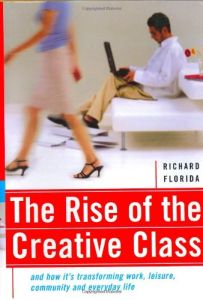Join getAbstract to access the summary!

Join getAbstract to access the summary!
Richard Florida
The Rise of the Creative Class
And How It's Transforming Work, Leisure, Community and Everyday Life
Basic Books, 2002
What's inside?
The newest force dominating society isn’t money, power or size; to change the world, join the creative class.
Recommendation
The good news is, Richard Florida’s book recognizes the growing economic and sociological impact of creativity. The bad news is that in just two years, it has lost some of its gloss. The collapse of the bull market, the popping of the dot.com bubble, the 9/11 trauma, each took some shine off of the creative economy, with its casual dress days, flexible schedules and free rides. But even though this appraisal occasionally sounds quaint, getAbstract.com believes that the book’s faith in the transforming economic and social power of creativity, its broad view, and its excellent references and quotations make it worth recommending.
Summary
About the Author
Richard Florida is the H. John Heinz III Professor of Regional Economic Development at Carnegie Mellon University. A columnist for Information Week, he lives in Pittsburgh, Pennsylvania.


















Comment on this summary